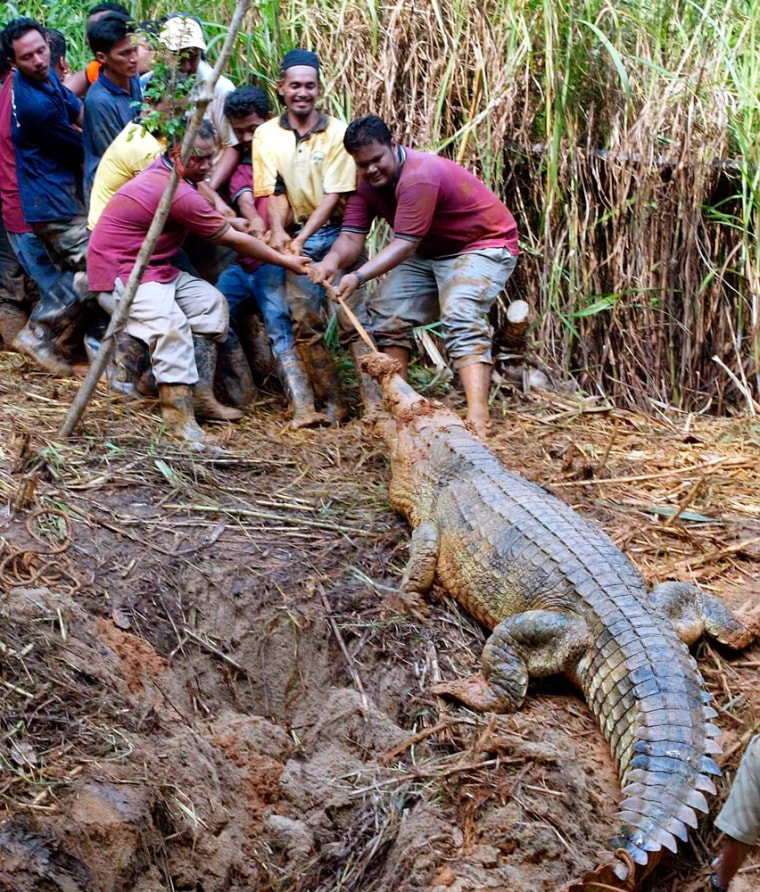An endangered male crocodile will be spoiled for choice when he gets ready to mate.
Jantan will be set up with four female crocodiles of the same species to hopefully produce offspring at a breeding center in Selangor state, Zainal Zahari, a veterinarian in the country's Department of Wildlife and National Parks, said Wednesday.
"He has got the right stamina and the right aggression," Zainal said of the 15-foot-long and 1,000-pound reptile known as a false gharial crocodile. "So we are very hopeful."
To get false gharial crocodiles to breed is difficult, Zainal said. They need to be in surroundings resembling their natural habitat, and need to be with compatible potential partners.
Zainal said Jantan, who was brought from Melaka Zoo to the breeding center on Monday, was the largest gharial crocodile on peninsular Malaysia, according to the department's records.
The breeding season for gharials starts in June, Zainal said.
Jantan, who is believed to be around 25 years old, was brought to the Melaka Zoo in southern Malaysia in 1995.
Most of the rare false gharial crocodiles in Southeast are found in the Indonesian province of Sumatra and on Borneo, an island shared by Malaysia, Indonesia and Brunei. The false gharials are different from gharials, which are found in the Indian subcontinent and parts of Myanmar.
This false gharial is a harmless species that feeds primarily on fish. It normally nests along river banks within freshwater peat swamp areas. The females usually lay 16 eggs and guard the nest.
"There are some 2,000 crocodiles of this species left in southeast Asia and studies are still being conducted as to why its breeding is so difficult," according to Abraham Mathew, a government veterinarian.
